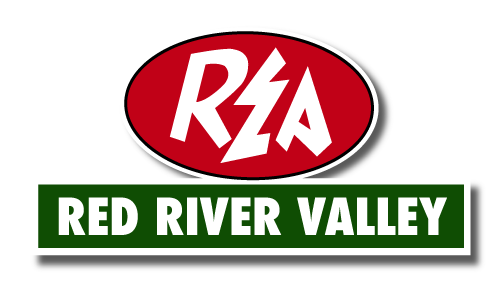Rate Information
Member Rate Schedules
View the 2025 Full Rate Schedule and Tariff Sheets here.
Factors Affecting Your Rates:
Cost of generation & transmission of electricity
The electricity distributed by REA is generated and transmitted through Western Farmers Electric Cooperative (WFEC) of Anadarko, OK. Red River Valley REA and 20 other cooperatives own WFEC, which makes members of each cooperative part owners in one of the largest electric generation networks in Oklahoma and New Mexico. Costs associated with the generation and transmission process include:
Fuel
Electricity generated by WFEC is produced using wind, solar, hyrdo, and combined-cycle natural gas combustion along with some of the most advanced clean coal technology in North America. The fluctuating costs of these fuels make up a significant part of the total bill you pay. By aggregating consumer load through WFEC, partnering cooperatives are better able to control these costs.
Generation & Transmission Infrastructure
Maintenance of generation and transmission facilities (poles and wires) help ensure safe and environmentally responsible operation. Since WFEC is cooperatively owned, these costs are shared across 21 cooperatives, again reducing the amount REA members are required to pay.
Demand
High consumer load (demand) during peak times can lead to significant increases in the cost of power. Reasonable power use during the hottest days of summer or during major emergencies can help reduce system demand. REA offers time-of-use and curtailable rates to qualifying consumers who demonstrate load-limiting ability during peak times.
Local Costs of Bringing Electricity to the Meter
REA is a democratically governed electric cooperative. This means that the board members you elect are to hire a general manager who supervises the daily operation of the cooperative. The board establishes the mission and goals of the cooperative and approves the annual budget. The general manager oversees business operations and employs personnel to perform tasks in the most cost-effective manner possible. Managed costs include:
Distribution Infrastructure
With over 2,800 miles of line and more than 16,000 meters to maintain, the REA distribution infrastructure represents one of the highest ongoing costs to the member. Through preventive maintenance, strategic upgrades and investment in new technologies, REA works daily to ensure that costs remain at the lowest possible level.
Billing & Accounting
The day-to-day operation of a business the size of Red River Valley REA requires a number of professionals from a wide variety of backgrounds. Through ongoing training and the implementation of numerous technologies, REA strives to maintain the highest level of customer satisfaction. Automated meter reading and payment by phone are two examples of new and expanded billing services provided by REA.
Catastrophic System Damage
Inclement weather can have a devastating effect on an electrical distribution system. Replacing just one mile of line destroyed by ice or wind can cost well into the tens of thousands of dollars. Natural disasters can greatly increase the costs of operation. REA does its best to invest responsibly to insure that the necessary resources are available in catastrophic times.
Meter Density
Simply put, as more consumers connect to Red River Valley REA lines, the less each member has to pay toward fixed costs. REA partners with a wide range of economic development groups across our service territory and the state to promote rural growth. We love rural Oklahoma and are doing our best to build the communities we service!
Regulation
As a nonprofit, member-owned utility, Red River Valley REA operates within the guidelines of federal statutes and the regulations of numerous agencies, including the U.S. Department of Energy and the U.S. Department of Agriculture (USDA). Partial funding for improvements and expansion are obtained through loans from the Rural Utility Services - a division of the USDA. The general manager and members of your Board of Trustees serve on committees at the state and national level to ensure that your voice is heard on issues related to electric cooperatives and rural Oklahoma.
Gross Receipts Tax
Many members ask what the Gross Receipts Charge is listed on their electric bill each month. Electric Cooperatives are assessed a State Gross Receipts Tax based on the amount of energy sold in their territory. This tax is basically a sales tax on natural resources and energy consumed in Oklahoma. All Oklahoma utilities are taxed in one form or another. The unique advantage of being served by an electric cooperative is that the taxes we pay (gross receipts tax) directly benefit the local school district in which the tax is assessed. The miles of line and percentage of total system within each school district determines the amount each district receives.
Power Cost Adjustment
The power cost adjustment factor, which is printed on each bill, reflects the increases/decreases in REA's cost of power purchased wholesale from WFEC. The fluctuation in the power cost adjustment is largely caused by changes in the cost of fuel for generation.

